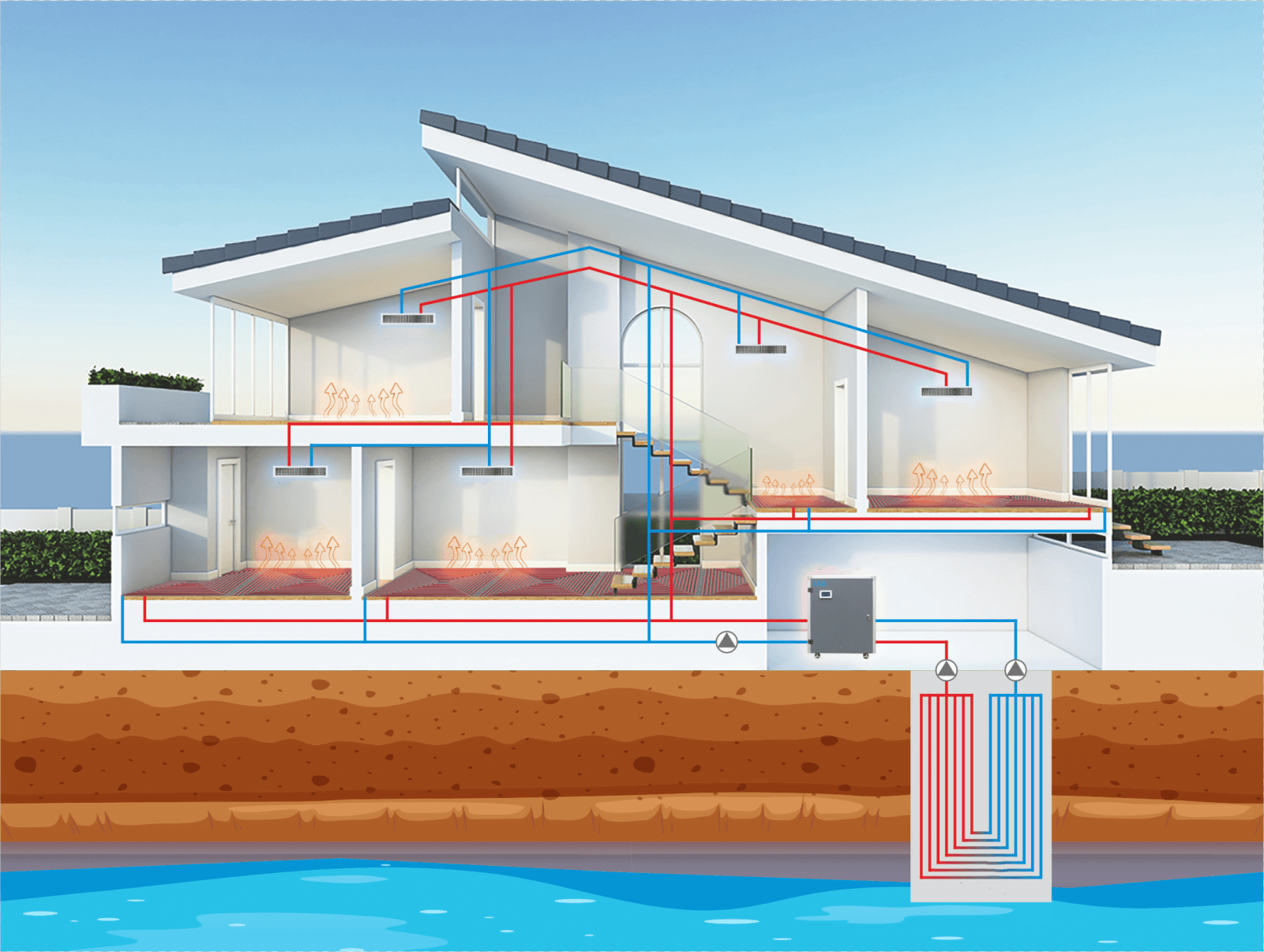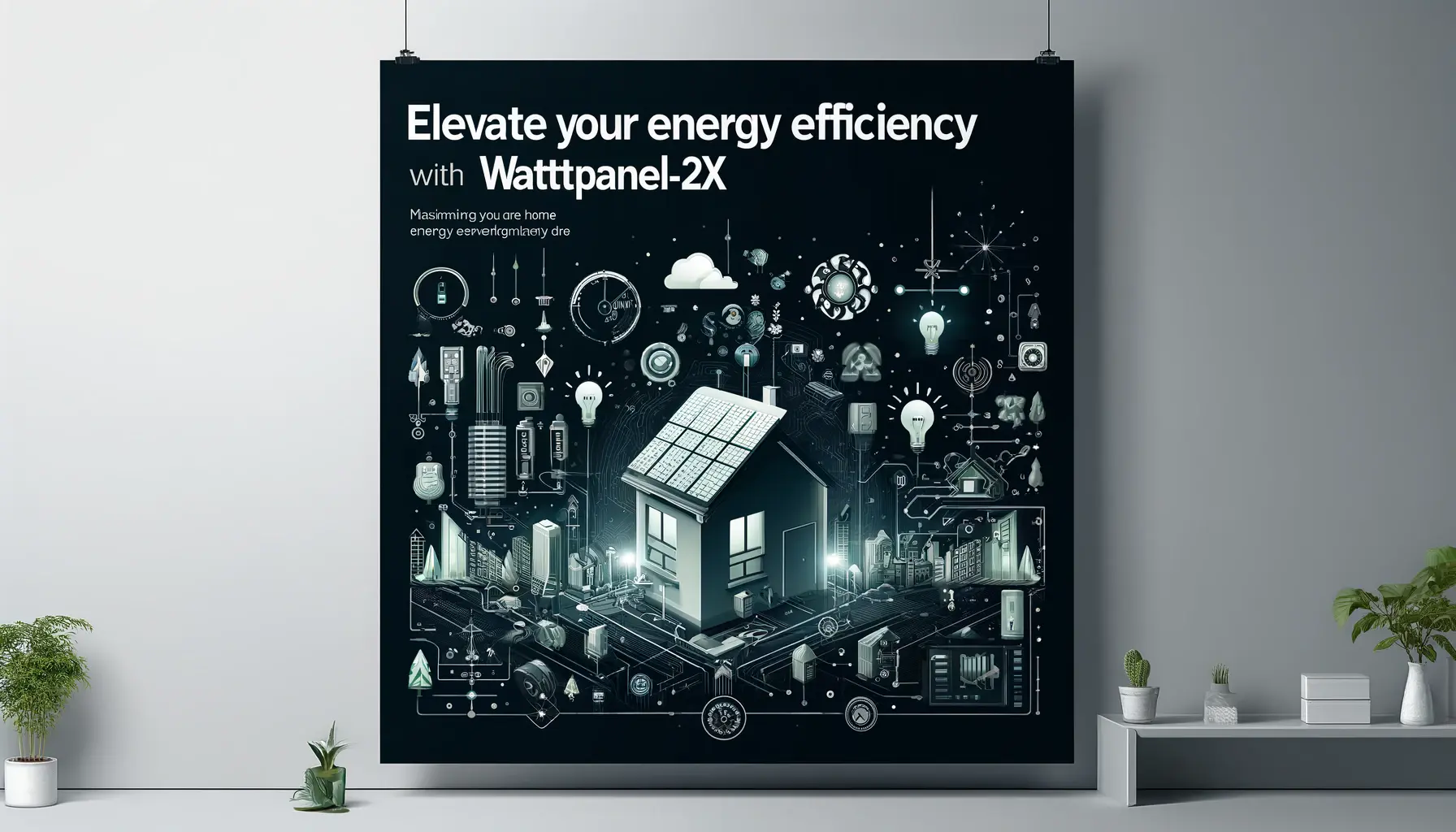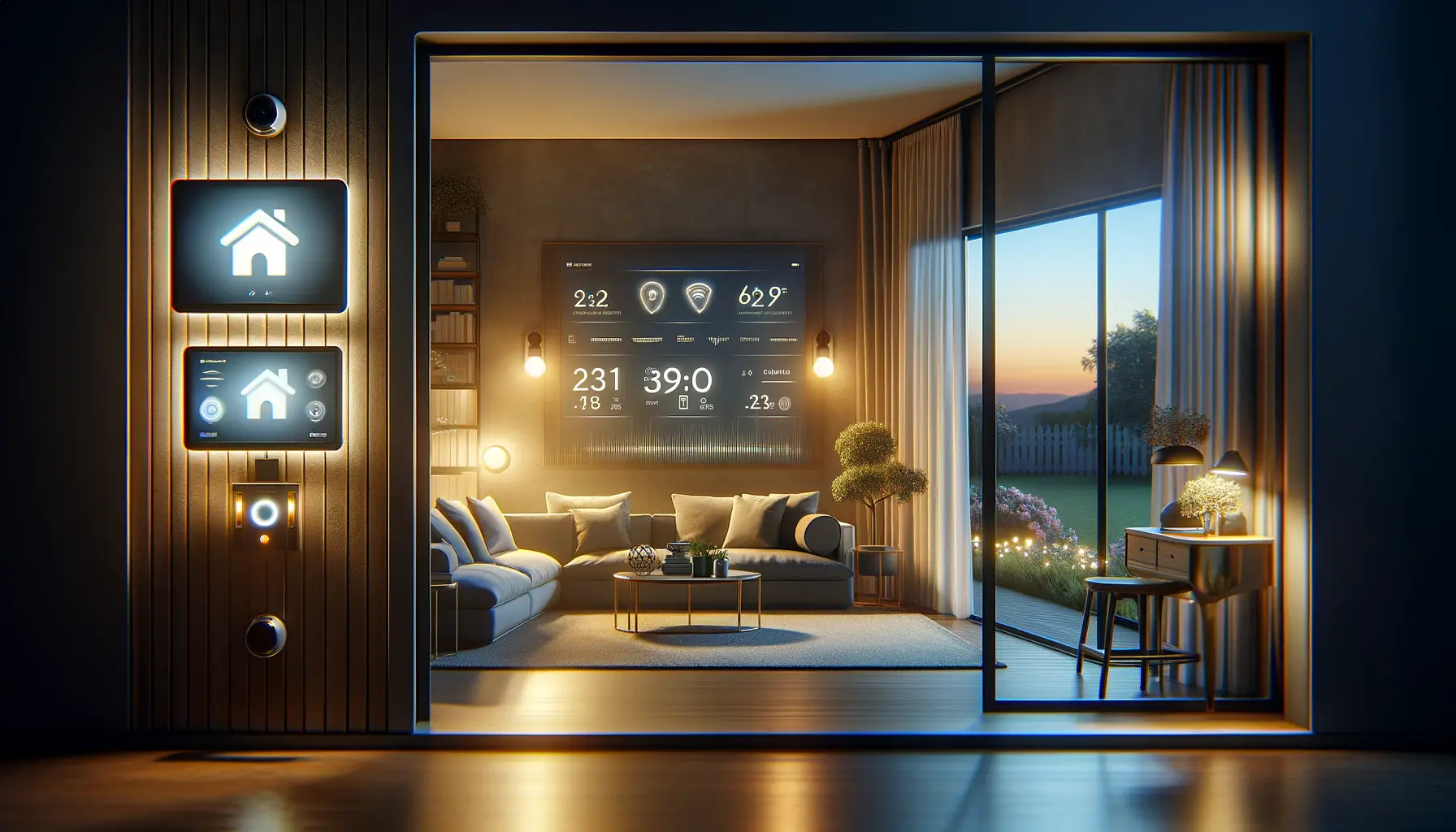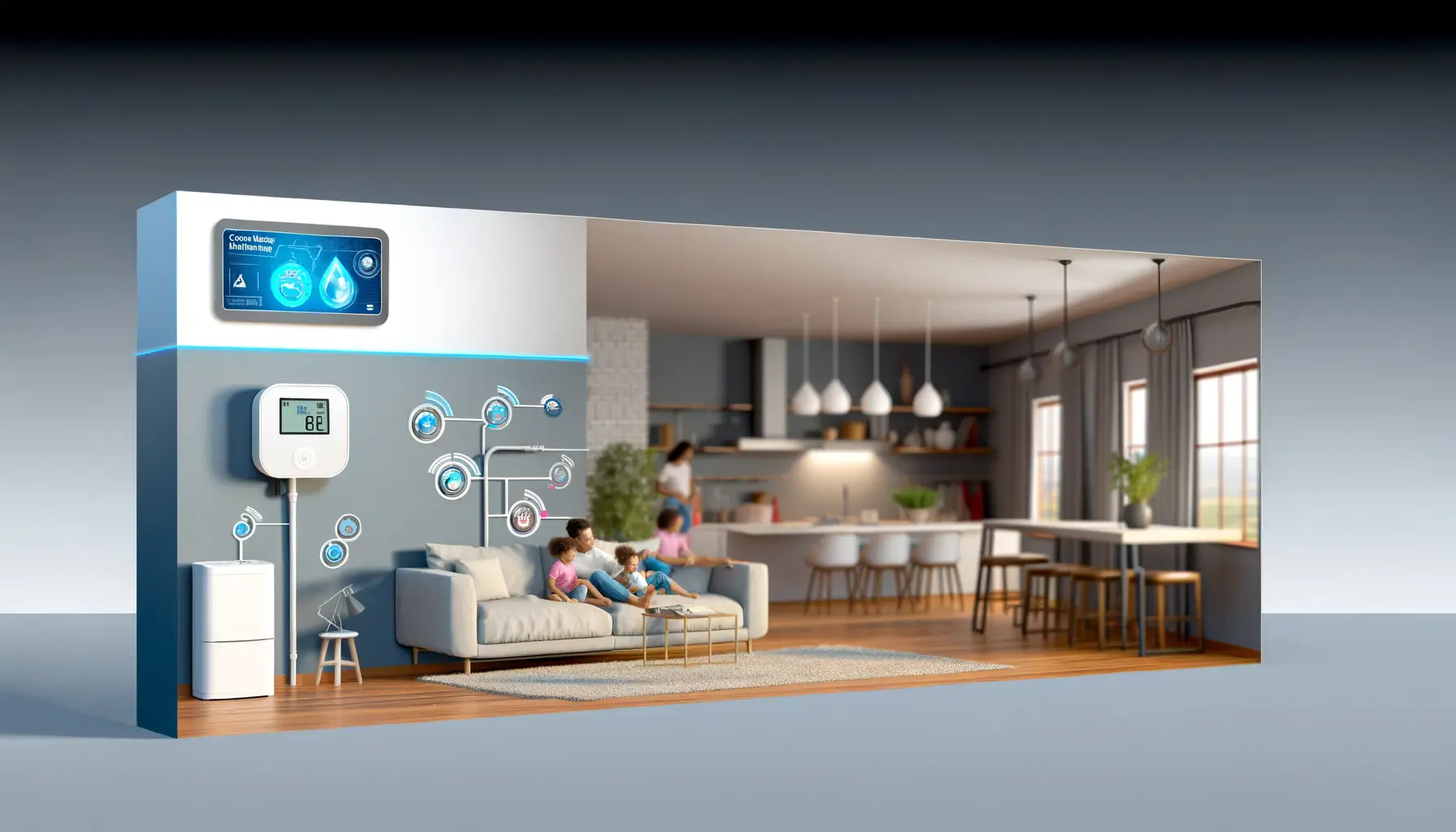
In today’s home environment, proper temperature control is not only related to the comfort of living but also directly affects energy consumption and economic benefits. From underfloor heating to central air conditioning, different types of thermostats play a core role, helping us maintain a constant and comfortable indoor temperature through the changing seasons. With the development of technology, various types of thermostats have appeared on the market, each with its unique functions and applicable scenarios. This article will introduce seven common types of home thermostats through detailed tables and analysis, helping you understand the characteristics and applications of each type of thermostat to make more appropriate choices.
ภาพรวมเทอร์โมสตัทในบ้าน
To more visually present the basic information and main functions of different thermostats, we first compare these seven common types of home thermostats through a table.
ตารางที่ 1: เทอร์โมสตัท 7 ประเภทและการเปรียบเทียบฟังก์ชัน
| ประเภทเทอร์โมสตัท | คุณสมบัติหลัก | สภาพแวดล้อมที่แนะนำ |
|---|---|---|
| เทอร์โมสตัททำความร้อนใต้พื้น | ควบคุมระบบทำความร้อนใต้พื้น ให้ความอบอุ่นภายในบ้านอย่างทั่วถึง | ที่อยู่อาศัย สำนักงาน โดยเฉพาะในพื้นที่หนาวเย็น |
| เทอร์โมสตัทปั๊มความร้อน | ควบคุมการทำความร้อนและความเย็นของปั๊มความร้อน การใช้พลังงานอย่างมีประสิทธิภาพ | พื้นที่ที่มีการเปลี่ยนแปลงตามฤดูกาลอย่างมีนัยสำคัญ |
| เทอร์โมสตัททำความร้อนไฟฟ้า | จัดการอุณหภูมิของเครื่องทำความร้อนไฟฟ้าหรือระบบทำความร้อนใต้พื้นไฟฟ้า | พื้นที่เล็กๆ ที่ต้องการความร้อนอย่างรวดเร็ว |
| เทอร์โมสตัทปรับอากาศส่วนกลาง | ควบคุมระบบทำความร้อนและความเย็นของอาคารทั้งหลัง | อาคารที่พักอาศัยหรืออาคารพาณิชย์ขนาดใหญ่ |
| เทอร์โมสตัทเครื่องทำน้ำอุ่น | ควบคุมอุปกรณ์ทำน้ำอุ่นให้รักษาอุณหภูมิน้ำให้คงที่ | บ้าน โรงแรม หรือสถานที่อื่นๆ ที่ต้องการน้ำร้อนจำนวนมาก |
| เทอร์โมสตัทเครื่องทำน้ำอุ่นพลังงานแสงอาทิตย์ | จัดการระบบน้ำอุ่นพลังงานแสงอาทิตย์ เพิ่มประสิทธิภาพการดูดซับและการแปลงพลังงาน | พื้นที่ใส่ใจสิ่งแวดล้อม มีแสงแดดส่องถึงมากมาย |
| เทอร์โมสตัทอากาศบริสุทธิ์ | ควบคุมระบบอากาศบริสุทธิ์ ปรับอุณหภูมิ และคุณภาพของอากาศที่เข้ามาภายในอาคาร | พื้นที่ที่อยู่อาศัยหนาแน่นสูง สภาพแวดล้อมที่ต้องการอากาศบริสุทธิ์อย่างต่อเนื่อง |
Through this table, we can preliminarily understand the main functions and applicable environments of each thermostat. Next, we will detail the specific characteristics and applications of each type of thermostat.
แนะนำเทอร์โมสตัท 7 ประเภทโดยละเอียด
1. เทอร์โมสตัททำความร้อนใต้พื้น

บทนำและฟังก์ชั่น:
The underfloor heating thermostat is designed to control floor heating systems. It monitors indoor temperatures through temperature sensors and adjusts the output of underfloor heating to ensure the floor temperature is even and meets the set comfort level. The heat provided by the underfloor system radiates evenly from the ground up, increasing thermal efficiency and reducing air dust movement, which is a significant advantage for people sensitive to respiratory systems.
การใช้งานทั่วไป:
In residential and commercial properties, underfloor heating thermostats are commonly used in main living areas such as living rooms, bedrooms, and bathrooms, providing continuous and comfortable heat. Users can set daily or weekly heating schedules based on their living habits to maximize energy efficiency.
The following sections will continue to detail the remaining six common types of home thermostats, their functions, typical usage, and characteristics.
2. เทอร์โมสตัทปั๊มความร้อน
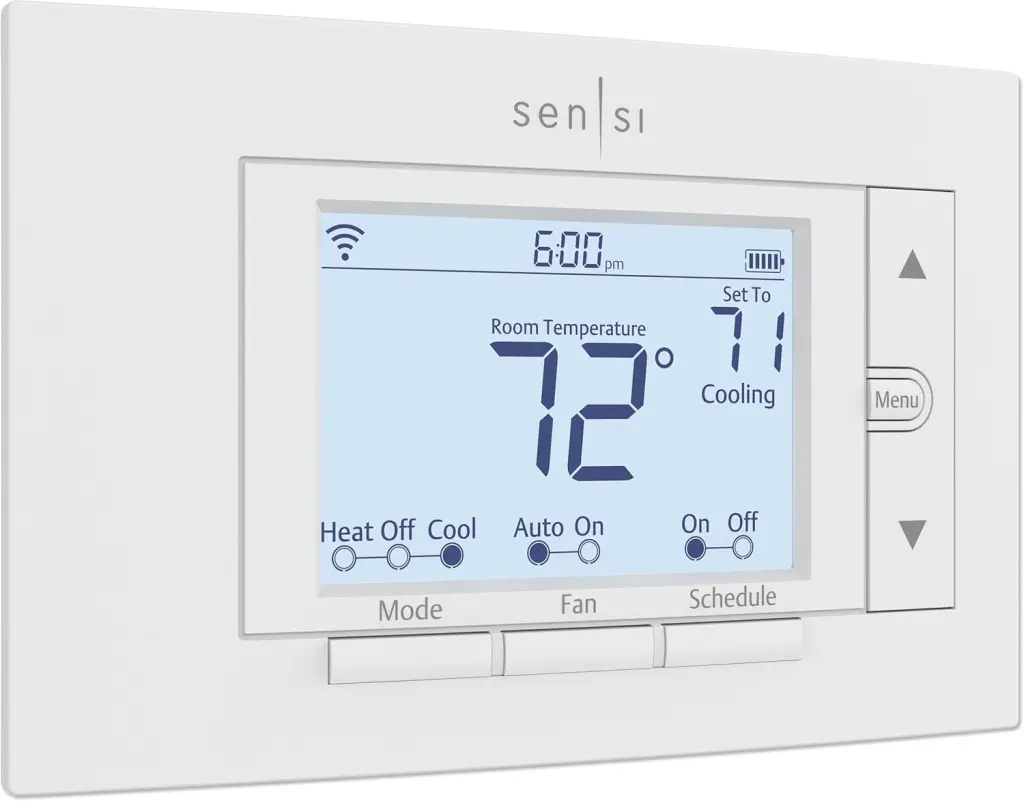
บทนำและฟังก์ชั่น:
The heat pump thermostat controls heat pump systems, which can provide both heating and cooling functions, making it very suitable for areas with significant temperature changes throughout the year. The heat pump thermostat can optimize the operation of the heat pump, improving energy efficiency and reducing energy consumption.
การใช้งานทั่วไป:
Heat pump thermostats are typically installed in residential or commercial buildings that require year-round temperature regulation. Users can set temperature thresholds to ensure indoor temperatures remain comfortable regardless of external temperature changes.
3. เทอร์โมสตัททำความร้อนไฟฟ้า
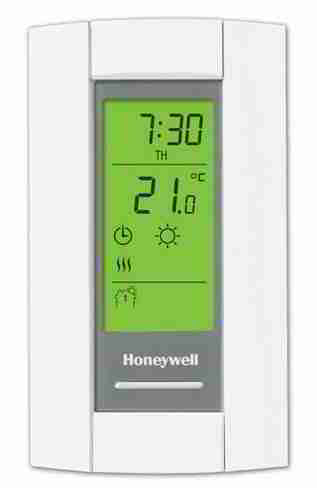
บทนำและฟังก์ชั่น:
The electric heating thermostat controls electric heating equipment, such as electric radiators or electric heated floors. This type of thermostat can precisely regulate the output of electric heating devices to maintain a stable indoor temperature.
การใช้งานทั่วไป:
In homes or offices, electric heating thermostats are suitable for quickly heating small spaces. Users can adjust the temperature as needed or set timers to automatically turn heating on or off at specific times.
4. เทอร์โมสตัทเครื่องปรับอากาศส่วนกลาง

บทนำและฟังก์ชั่น:
The central air conditioning thermostat manages the central air conditioning system, controlling the heating and cooling of an entire building or house. This thermostat can achieve complex multi-zone temperature control, improving overall energy efficiency.
การใช้งานทั่วไป:
Central air conditioning thermostats are usually installed in large residential or commercial buildings, setting different temperatures for different areas or floors to achieve precise temperature control.
5. เทอร์โมสตัทเครื่องทำน้ำอุ่น

บทนำและฟังก์ชั่น:
The water heater thermostat controls the operation of water heaters to ensure constant water temperature and avoid energy waste. This thermostat can precisely adjust the temperature of the water heater, suitable for homes, hotels, or other places that require a large amount of hot water.
การใช้งานทั่วไป:
Users can set the water temperature according to personal preferences and needs. Water heater thermostats can also set specific heating schedules to save energy and provide hot water when needed.
6. เทอร์โมสตัทเครื่องทำน้ำอุ่นพลังงานแสงอาทิตย์

บทนำและฟังก์ชั่น:
The solar water heater thermostat manages the temperature exchange between solar collectors and storage tanks. It optimizes the absorption and conversion of energy, ensuring system efficiency is maximized while preventing overheating.
การใช้งานทั่วไป:
In sun-rich areas, solar water heater thermostats can automatically adjust hot water production based on solar radiation intensity, ensuring a continuous supply of efficient and environmentally friendly hot water.
7. เทอร์โมสตัทปรับอากาศ
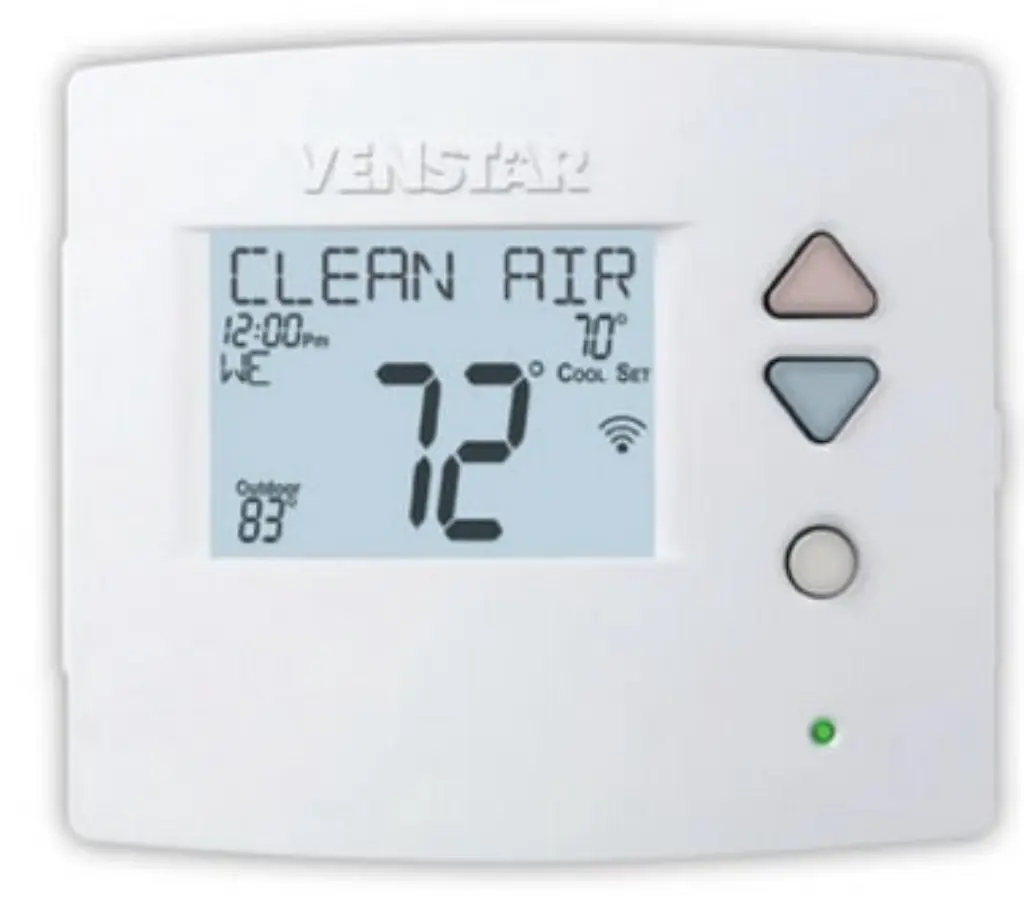
บทนำและฟังก์ชั่น:
The fresh air thermostat controls the operation of fresh air systems, which are responsible for introducing processed fresh air indoors. It can adjust the temperature of the incoming air, improving air quality and providing a healthy, comfortable environment for living spaces.
การใช้งานทั่วไป:
Fresh air thermostats are particularly important in high-density residential areas or industrial environments. They can automatically adjust the intake based on the temperature difference between the outside and inside, ensuring indoor air is fresh and at a suitable temperature.
This detailed introduction provides specific information and usage guidelines for various thermostats, helping users choose the most suitable thermostat based on their actual needs and living environments. The following sections will involve more discussions on international specifications and standards, ensuring global users can safely and effectively use these devices.
วิธีการเดินสายและกลยุทธ์การควบคุม
Next, we will detail the wiring methods and control strategies of various thermostats through another table, ensuring you can choose the most suitable configuration based on your home’s specific needs.
ตารางที่ 2: เทอร์โมสตัท 7 ประเภท วิธีการเดินสาย และกลยุทธ์การควบคุม
In this section, we will detail the wiring methods and control strategies of various thermostats through a table, which is crucial for ensuring correct installation and optimal performance of the devices.
| ประเภทเทอร์โมสตัท | วิธีการเดินสายไฟ | กลยุทธ์การควบคุม |
|---|---|---|
| เทอร์โมสตัททำความร้อนใต้พื้น | Usually includes power, ground, and control wires, connected to the underfloor heating system’s power and control ends. | การควบคุมความแตกต่างของอุณหภูมิ การควบคุม PID คุณสมบัติการเรียนรู้แบบอัจฉริยะและตั้งโปรแกรมได้ |
| เทอร์โมสตัทปั๊มความร้อน | Needs to be connected to the heat pump’s power and control ends, may require a multi-wire system to support heating and cooling functions. | การควบคุมความแตกต่างของอุณหภูมิ การควบคุมตารางเวลา การปรับอัจฉริยะ |
| เทอร์โมสตัททำความร้อนไฟฟ้า | ระบบสองสายหรือสามสายเรียบง่าย ควบคุมองค์ประกอบความร้อนไฟฟ้าโดยตรง | การควบคุมความแตกต่างของอุณหภูมิ, การควบคุมด้วยตัวตั้งเวลา, บางรุ่นรองรับการควบคุมระยะไกล |
| เทอร์โมสตัทปรับอากาศส่วนกลาง | ระบบสายหลายเส้นที่ซับซ้อน ต้องเชื่อมต่อกับส่วนต่างๆ ของระบบปรับอากาศกลาง | การควบคุมโซน การควบคุมอุณหภูมิและความชื้น การควบคุมอัจฉริยะและระยะไกล |
| เทอร์โมสตัทเครื่องทำน้ำอุ่น | สายไฟอย่างน้อยสองเส้นเพื่อควบคุมสวิตช์ไฟของเครื่องทำความร้อน | การควบคุมความแตกต่างของอุณหภูมิ การควบคุมการเพิ่มประสิทธิภาพ |
| เทอร์โมสตัทเครื่องทำน้ำอุ่นพลังงานแสงอาทิตย์ | Includes temperature sensor wires, power wires, and control wires, to optimize solar energy collection and use. | การควบคุมอุณหภูมิที่สำคัญ การตรวจสอบประสิทธิภาพ การปรับอัตโนมัติ |
| เทอร์โมสตัทอากาศบริสุทธิ์ | โดยปกติจะต้องเชื่อมต่อกับเซ็นเซอร์วัดอุณหภูมิภายในและภายนอกอาคารและหน่วยอากาศบริสุทธิ์ | Automatic adjustment based on indoor and outdoor temperature difference, timer control, air quality feedback control. |
Through this table, we can see the differences in wiring methods and control strategies among different types of thermostats, which directly affect the installation process and daily operation efficiency of the devices.
ข้อกำหนดและมาตรฐานสากล
For thermostats used across countries and sold in international markets, understanding and complying with the electrical specifications and safety standards of different countries and regions is extremely important. Here is a table summarizing some of the main market specifications and wiring standards.
ตารางที่ 3: ข้อกำหนดและมาตรฐานการเดินสายในประเทศและภูมิภาคต่างๆ
| ประเทศ/ภูมิภาค | ข้อกำหนดด้านแรงดันไฟฟ้าและความถี่ | กฎระเบียบและการรับรอง | ข้อกำหนดการเดินสายไฟพิเศษ |
|---|---|---|---|
| USA | 120V/60Hz | การรับรองมาตรฐาน UL, รหัสไฟฟ้า NEC | ข้อกำหนดที่เข้มงวดสำหรับมาตรการต่อสายดินและการป้องกัน |
| EU | 220-240V/50Hz | เครื่องหมาย CE, การปฏิบัติตาม RoHS | Must comply with the EU’s Low Voltage Directive and Electromagnetic Compatibility Directive |
| จีน | 220V/50Hz | การรับรอง CCC | ต้องปรับตัวให้เข้ากับความหนาแน่นของประชากรสูงและความต้องการใช้ความถี่สูง |
| ประเทศญี่ปุ่น | 100V/50Hz หรือ 60Hz | การรับรอง PSE | มาตรฐานป้องกันแผ่นดินไหวและทนไฟโดยเฉพาะ |
| ออสเตรเลีย | 230V/50Hz | การรับรอง SAA | การติดตั้งต้องคำนึงถึงผลกระทบของสภาพอากาศภายนอก เช่น การกันน้ำและการป้องกันรังสียูวี |
This table shows some of the key electrical and safety standards to consider when operating in the global market, helping manufacturers and users ensure product compatibility and safety.
โหมดควบคุมอัจฉริยะ: นวัตกรรมเทอร์โมสตัทสมัยใหม่
As technology continues to advance, the widespread adoption of smart home systems has greatly changed our way of managing home appliances, and thermostats are no exception. Smart control modes make thermostats not just simple temperature adjustment devices but a system that can increase energy efficiency, enhance comfort, and simplify daily life. This section will explore the control methods of smart thermostats and their benefits.
คุณสมบัติพื้นฐานของเทอร์โมสตัทอัจฉริยะ
The main difference between smart thermostats and traditional thermostats is their connectivity and automation features. These thermostats are usually connected to the home network through Wi-Fi or other wireless technologies (such as Zigbee or Z-Wave), allowing users to remotely control the home temperature via smartphone apps, tablets, or voice assistants (like Amazon Alexa, Google Assistant, or Apple HomeKit).
ฟังก์ชั่นการควบคุมอัจฉริยะหลัก
- รีโมต: Users can view and adjust the home temperature settings from anywhere via an app, whether at the office or on vacation.
- การกำหนดเวลาอัตโนมัติ: Smart thermostats can automatically set temperature schedules based on users’ daily activity patterns. For example, it can start heating the home automatically before you usually get up, ensuring the room is warm and comfortable when you wake up.
- การวิเคราะห์ประสิทธิภาพการใช้พลังงาน: Many smart thermostats provide detailed energy consumption reports and analyses, helping users understand how their heating and cooling habits affect energy consumption and how to adjust settings to reduce energy costs.
- การกำหนดขอบเขตทางภูมิศาสตร์: Using the location of users’ smartphones, smart thermostats can know when users leave home or are on their way home. The system adjusts the temperature accordingly to optimize energy efficiency and provide a comfortable environment when users arrive.
- การควบคุมด้วยเสียง: Once integrated with smart home assistants, users can simply use voice commands to adjust temperature settings, greatly increasing convenience and accessibility.
- การเรียนรู้ที่ชอบ: Some high-end smart thermostats, like the Nest Learning Thermostat, have the ability to learn users’ preferences and can automatically establish a suitable temperature schedule for the home within a few days without much user intervention.
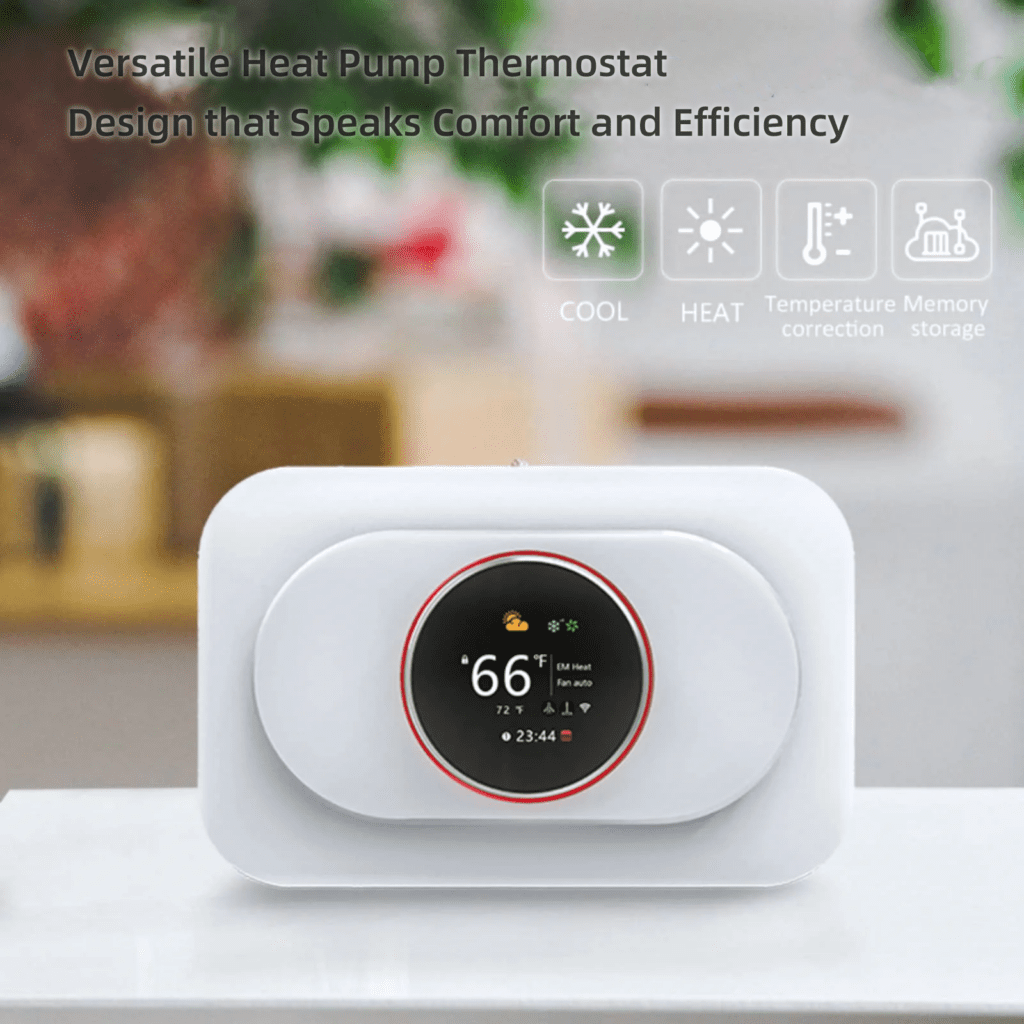
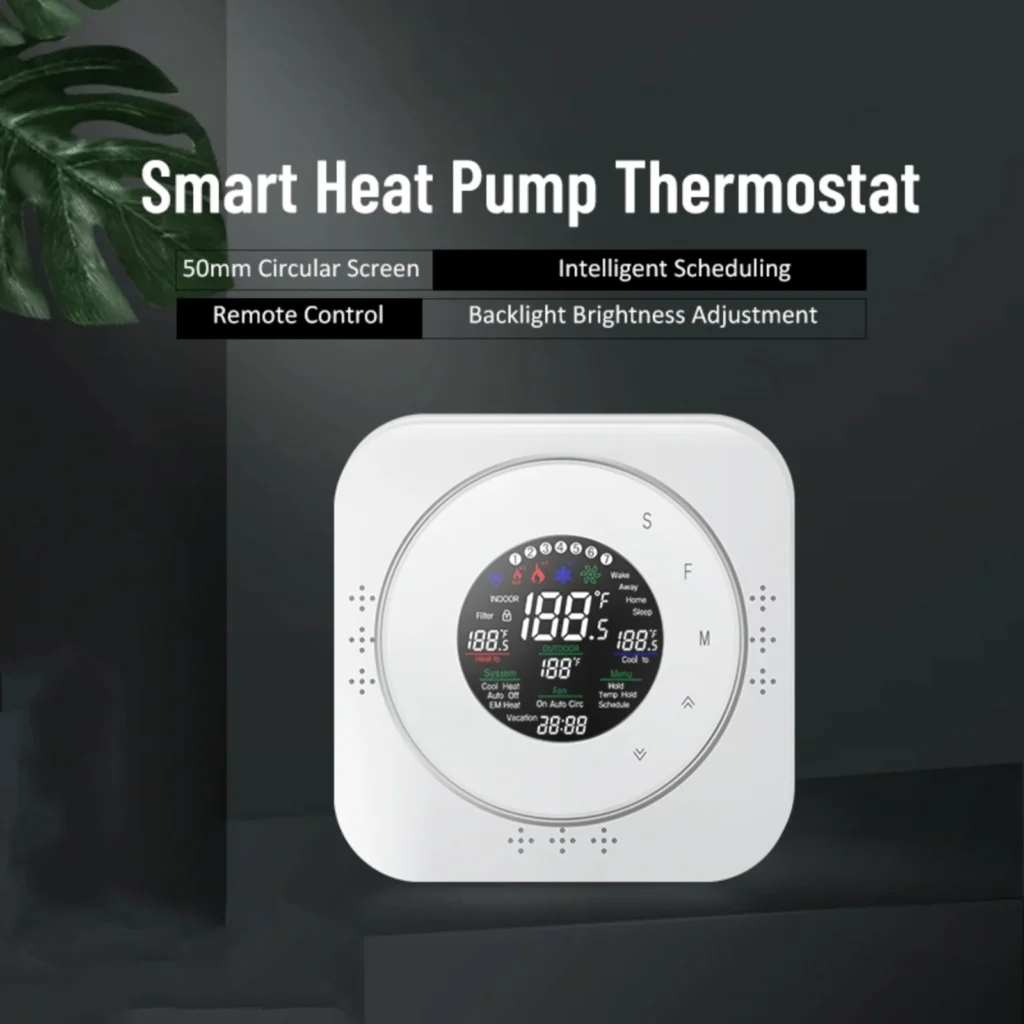

การใช้งานจริงของเทอร์โมสตัทอัจฉริยะ
Considering the potential of smart thermostats to improve energy efficiency and user comfort, many modern homes and offices have begun deploying these devices. For example, a family might use a smart underfloor heating thermostat to preheat rooms in winter, while optimizing cooling efficiency with a central air conditioning thermostat in summer.
The integration and application of smart thermostats not only enhance the comfort of living and working environments but also help achieve a more sustainable lifestyle by precisely controlling and intelligently adjusting to reduce energy waste. As technology continues to advance and user awareness increases, it is expected that smart thermostats will become an important component of home automation in the future.
ผลการประหยัดพลังงานและข้อมูลบ่งชี้ของเทอร์โมสตัทอัจฉริยะ
Smart thermostats not only improve the comfort and convenience of homes, but they also play a crucial role in energy saving and reducing environmental impact. Through smart features, these devices can optimize the timing of heating and cooling, reducing unnecessary energy consumption, thereby bringing significant energy-saving effects to users. This section will explore the energy-saving effects of smart thermostats and provide some specific energy-saving data.
คุณสมบัติการประหยัดพลังงาน
- การปรับอัตโนมัติ: Smart thermostats can automatically adjust settings based on outdoor temperatures and indoor activity patterns, avoiding excessive heating or cooling, which directly reduces energy waste.
- การจัดตารางเวลาที่มีประสิทธิภาพ: By learning users’ living habits, smart thermostats can automatically create efficient heating and cooling schedules. For example, they automatically reduce the operation of heating or air conditioning during times when users are typically not at home.
- การเพิ่มประสิทธิภาพรายละเอียด: Smart thermostats can also achieve energy savings by making small adjustments to temperature settings (such as lowering by 1-2°F/about 0.5-1°C), and these small changes usually do not affect the comfort of the occupants.
ข้อมูลการประหยัดพลังงานเชิงบ่งชี้
The energy-saving effects of smart thermostats can be more clearly demonstrated through the following data:
- การลดการใช้พลังงาน:คาดว่าเทอร์โมสตัทอัจฉริยะสามารถลดการใช้พลังงานในบ้านได้ประมาณ 10% ถึง 12%
- การออมรายปี: On average, homes can save about 10% to 23% on heating costs and 15% on air conditioning costs per year by using smart thermostats.
- ผลตอบแทนการลงทุนระยะยาว: Although the initial investment for smart thermostats is relatively high, according to data from the U.S. Environmental Protection Agency (EPA), the average family can recoup this cost through energy savings within two years.
These data show that although smart thermostats cost more than traditional thermostats, they can achieve cost-effectiveness in the long run by significantly reducing energy costs. More importantly, this type of thermostat helps households manage and use energy more effectively through automation and intelligence features.
สรุป
เทอร์โมสตัทอัจฉริยะไม่เพียงแต่ช่วยเพิ่มความสะดวกสบายให้กับชีวิตของเราเท่านั้น
but their energy-saving features also help promote homes towards a greener, more sustainable direction. As technology continues to advance, the market for smart thermostats is expected to expand further, and their energy-saving technologies will continue to improve, contributing more to the global improvement in energy efficiency.
Choosing and installing the right thermostat is crucial for enhancing the comfort and energy efficiency of home and office environments. Through the introduction and analysis in this article, we hope readers can better understand the functions, applicable scenarios, wiring methods, and international specification differences of various thermostats, thereby choosing the most suitable thermostat for their needs. In today’s increasingly globalized world, the correct selection and use of these devices not only enhance the energy efficiency of individuals and businesses but also ensure compliance with regulations and standards in different regions, achieving safe, efficient environmental control.
